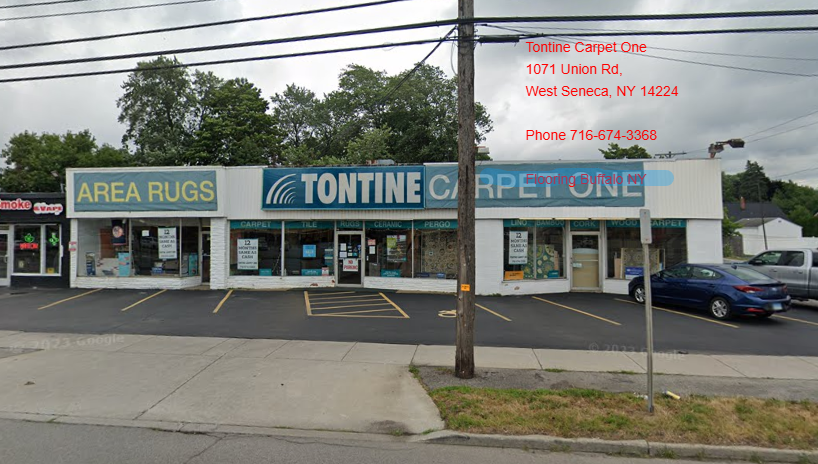Introduction
When we walk by a fantastically embellished home, our eyes more often than not fall upon the carpeting that serves as both a beginning and a announcement piece. Carpets can carry areas, proposing warmth, alleviation, and a cultured appeal. But have you ever questioned how carpet types advanced through the years? From high-priced Persian rugs to fashionable minimalist designs, the adventure of carpeting patterns reflects societal adjustments, technological developments, and evolving tastes.

In this article, we’ll explore The Evolution of Carpeting Styles Over the Years in detail. We'll delve into old context, parts used, design tendencies, and modern-day ideas in the carpet industry. Whether you are searching out carpets Buffalo NY, Hardwood Flooring Buffalo NY, or without difficulty exploring concepts at your regional Buffalo Carpet Store, this newsletter will deliver insights into how carpets have reworked over the years.
The Evolution of Carpeting Styles Over the Years
A Brief History of Carpeting
Carpeting has a prosperous heritage courting again 1000s of years. Initially created for reasonable reasons, carpets developed into decorative artwork paperwork that pondered cultural values and inventions.

Early Beginnings: The Origin of Rugs
- Persian Influence: Persian rugs are a number of the oldest popular carpets, courting returned to around 500 BC. Their complex designs most likely function floral motifs and geometric styles. Navajo Weaving: In North America, Native American tribes just like the Navajo all started weaving their very own assorted rugs as early as the 17th century.
These early carpets were no longer most effective useful but also served as fame symbols inside their respective cultures.
The Middle Ages: A Shift in Functionality
As societies built all through the Middle Ages, carpets transitioned from being simply utilitarian to serving as decorative substances in castles and church buildings across Europe. The use of prosperous colorings and elaborate designs grew to become admired.
Renaissance to Industrial Revolution: The Rise of Luxury Carpets
Renaissance Flourishes
During the Renaissance length (14th to 17th centuries), European royalty commissioned exquisite tapestries and carpets for his or her houses. These textiles featured vivid hues and depicted scenes from mythology or nature.
Industrial Innovations
The Industrial Revolution in the 18th century marked a substantive turning point for carpeting kinds:
- Mass Production: With advancements in equipment, carpets is perhaps produced on a larger scale. Synthetic Fibers: The introduction of synthetic fibers provided toughness at slash prices.
twentieth Century: Diverse Styles Emerge
As we entered the 20th century, carpeting all started to diversify extra:
Mid-Century Modern Designs
The mid-century smooth circulate emphasized simplicity and capability. Carpets such as shag rugs changed into widely used on account of their textural characteristics.
Post-War Era Trends
After World War II, there has been a surge in suburban dwelling which stimulated carpet layout:
- Wall-to-wall carpeting changed into a staple in many homes. Bright colorations like avocado eco-friendly and mustard yellow mirrored well-known lifestyle for the duration of this period.
Contemporary Trends: Sustainable Practices and Technology
Today’s carpets replicate present day daily life selections with an emphasis on sustainability and science:
Eco-Friendly Materials
Many valued clientele are actually looking sustainable recommendations made up of recycled materials or biological fibers. This shift is obvious at neighborhood ground retailers like Tontine Carpet One Buffalo NY.
Technological Advancements
Innovations along with stain-resistant therapies and extended installing equipment have made holding carpets more easy than ever formerly.
Materials Used in Carpet Making Through Time
Natural vs Synthetic Fibers: A Comparative Analysis
When discussing carpet material over time, it’s elementary to think about equally healthy and synthetic fibers:
| Material Type | Characteristics | Advantages | Disadvantages | |-------------------|-----------------------------------------------------|-----------------------------------------|-------------------------------------| | Natural Fibers | Wool, cotton, jute | Eco-pleasant; luxury think | Can be steeply-priced | | Synthetic Fibers | Nylon, polyester | Durable; stain-resistant | Less breathable |
Wool: The Classic Choice
Wool has been revered for its durability and steeply-priced texture throughout the time of background. It retains warmness smartly and is certainly resistant to dirt.
Nylon: A Modern Marvel
Introduced inside the mid-twentieth century, nylon immediately turned renowned on account of its resilience in opposition to put on and tear—splendid for top-site visitors places like hallways https://funkykesac.gumroad.com/p/essential-questions-to-ask-when-shopping-for-carpets-in-buffalo or residing rooms.
Design Trends Across Different Eras
Victorian Patterns: Opulence Redefined
In Victorian times (19th century), ornate styles ruled carpet designs with floral motifs reflecting wealth.
Art Deco Inspirations
Art Deco (Twenties) delivered geometric shapes into center of attention—supplying daring contrasts that also resonate today.
Influence of Culture on Carpet Design
Cultural Significance
Every tradition has its special contribution to carpet making—from Persian motifs celebrating nature to Navajo patterns reflecting storytelling.
Regional Styles
Each sector showcases specific traits based mostly on achievable materials or natural approaches—suppose Turkish kilims versus Indian dhurries!
FAQs
1. What are a few well-liked forms of carpeting?
There are countless forms which include loop pile, reduce pile (like plush), frieze (twisted), Berber (looped & textured). Each provides diversified aesthetics & alleviation tiers!
2. How do I decide on a carpet structured on life style?
Consider factors reminiscent of foot traffic stages! For busy households with pets/childrens go with long lasting possibilities like nylon or Berber styles that resist stains!
3. Are green carpets worthy it?
Absolutely! They no longer only make contributions in opposition to sustainability yet can even present bigger air caliber advantages! Many green brands now have fashionable choices too!
4. How characteristically have to I update my carpet?
Typically each and every 5-10 years based on utilization & upkeep! Regular cleaning can extend its existence radically!
five. What’s trending properly now in carpeting patterns?
Current traits emphasize textures—suppose shaggy appears to be like paired with impartial colorings! Also multi-sensible facet rugs are extraordinarily usual!
6. Can I installation carpet myself?
While DIY deploy is workable notably with modular tiles; official setting up guarantees perfect outcomes fairly for wall-to-wall fittings!
Conclusion
As we mirror on The Evolution of Carpeting Styles Over the Years, it really is clean that these humble textiles inform tales a long way past aesthetics—they encapsulate cultural identities when adapting with time's currents! Whether you’re touring your regional Buffalo Carpet Store or determining among recommendations at Tontine Carpet One Buffalo NY; realizing this evolution complements appreciation on your picks these days!
From natural and organic fibers steeped in custom to current synthetic thoughts; our connection with floors is still profound! So subsequent time you walk throughout your plush living room carpet understand that—it’s more than just fabric underfoot—it’s background woven into each and every thread!